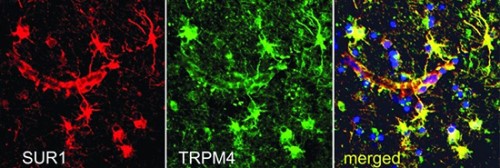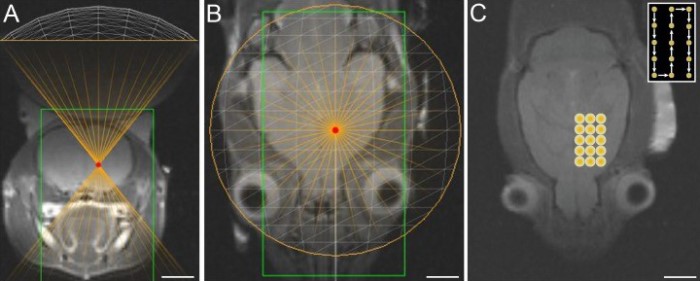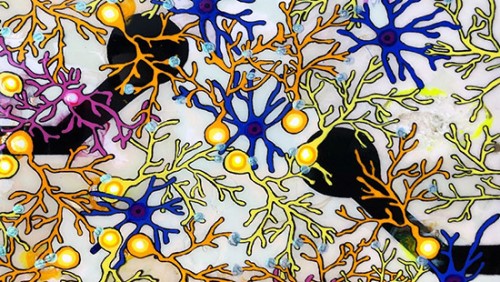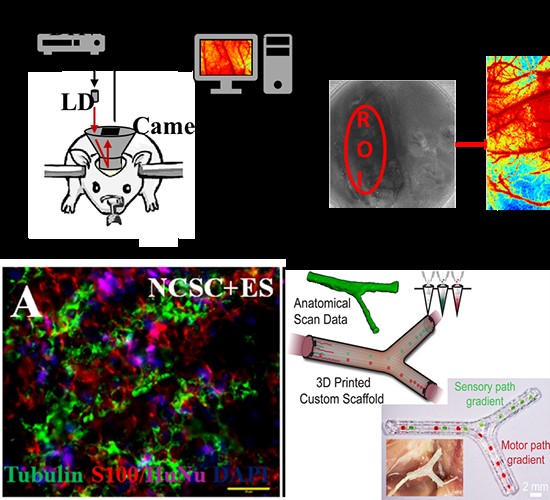Basic & Translational Research | Neurosurgery

Simard Lab
Dr. J Marc Simard's laboratory investigates molecular mechanisms of cerebral edema formation, blood-brain barrier dysfunction, and neuroinflammation after acute and chronic CNS injury.
The laboratory's efforts led to the discovery of the novel SUR1-TRPM4 channel, which contributes to secondary injury after stroke and traumatic brain and spinal injury.
Multiple clinical trials have directly stemmed from this work, including the ongoing phase III multisite CHARM trial, which investigates the use of the SUR1 inhibitor glyburide to reduce cerebral edema after ischemic stroke.
Key Work
- Chen, M., & Simard, J. M. (2001). Cell swelling and a nonselective cation channel regulated by internal Ca2+ and ATP in native reactive astrocytes from adult rat brain. Journal of Neuroscience, 21(17), 6512-6521.
- Simard, J. M., et al. (2006). Newly expressed SUR1-regulated NC Ca-ATP channel mediates cerebral edema after ischemic stroke. Nature Medicine, 12(4), 433-440.
- Simard, J. M., et al. (2007). Endothelial sulfonylurea receptor 1–regulated NC Ca-ATP channels mediate progressive hemorrhagic necrosis following spinal cord injury. The Journal of Clinical Investigation, 117(8), 2105-2113.
- Gerzanich, V., et al. (2009). De novo expression of Trpm4 initiates secondary hemorrhage in spinal cord injury. Nature Medicine, 15(2), 185.
Publications
Federal Support
Translational Therapeutics Research Group (TTRG)

The TTRG is led by Graeme Woodworth, MD, Anthony Kim, PhD, and Jeffrey Winkles, PhD. Research is focused on a variety of projects related to the diagnosis and treatment of brain tumors.
Dr. Winkles is currently investigating the general biology of the TWEAK/Fn14 axis and its potential role in solid cancers, with a focus on Fn14 as a driver of glioma pathophysiology.
Dr. Kim studies the use of targeted nanoparticles to enhance delivery of therapeutic agents to glioma and metastatic cancer cells.
Dr. Woodworth's ongoing work focuses on developing new diagnostic and therapeutic applications of MR-guided focused ultrasound in brain tumor treatment.
Key Work
- Connolly, N.P., Stokum, J.A., Schneider, C.S., Ozawa, T., Xu, S., Galisteo, R. Castellani, R.J., Kim, A.J., Simard, M., Winkles, J.A., Holland, E.C. and Woodworth, G.F. (2017) Genetically engineered rat gliomas: PDGF-driven tumor initiation and progression in tv-a transgenic rats recreate key features of human brain cancer. PLoS One 12:e0174557.
- Wadajkar, A.S., Dancy, J.G., Roberts, N.B., Connolly, N.P., Strickland, D.K., Winkles, J.A., Woodworth, G.F. and Kim, A.J. (2017). Decreased non-specific adhesivity, receptor-targeted (DART) nanoparticles exhibit improved dispersion, cellular uptake, and tumor retention in invasive gliomas. Journal of Controlled Release 267:144-153.
- Hersh, D.S., Anastasiadis, P., Mohammadabadi, A., Nguyen, B.A., Guo, S., Winkles, J.A., Kim, A.J., Gullapalli, R., Keller, A., Frenkel, V. and Woodworth, G.F. (2018). MR-guided transcranial focused ultrasound safely enhances interstitial dispersion of large polymeric nanoparticles in the living brain. PLoS One 13:e0192240.
- Hersh, D.S., Harder, B.J., Roos, A., Peng, S., Heath, J.E., Legesse, T., Kim, A.J., Woodworth, G.F., Tran, N.L. and Winkles, J.A. (2018). The TNF receptor family member Fn14 is highly expressed in recurrent glioblastoma (GBM) and in GBM patient-derived xenografts with acquired temozolomide resistance. Neuro-Oncology 20:1321-1330.
- Roberts, N.B., Alqazzaz, A., Hwang, J.R., Qi, X., Keegan, A.D., Kim, A.J., Winkles, J.A. and Woodworth, G.F. (2018). Oxaliplatin disrupts pathological features of glioma cells and associated macrophages independent of apoptosis induction. Journal of Neuro-Oncology 140:497-507.
- Dancy, J.G., Wadajkar, A.S., Connolly, N.P., Galisteo, R., Ames, H.M., Peng, S., Tran, N.L., Goloubeva, O.G., Woodworth, G.F., Winkles, J.A. and Kim, A.J. (2020). Decreased non-specific adhesivity, receptor-targeted (DART) therapeutic nanoparticles for primary and metastatic breast cancer. Science Advances 6:eaax3931
Publications
Federal Support
Other Support
Spotlight
- Focused ultrasound to open the blood-brain barrier
- First patient in US takes part in a clinical trial to treat glioblastoma by penetrating the blood-brain barrier
- Bridging laboratory research and patient care
Learn more about the Translational Therapeutics Research Group.
The Ksendzovsky Lab

When faced with high energy demands, the brain adjusts its metabolic response, yet the cellular basis for how this occurs or if these changes play a role in epilepsy remains unknown.
The Ksendzovsky lab is interested in combining electrophysiology and molecular techniques to study the fundamental role metabolism plays in regulating neuronal activation and epilepsy.
To do this, we leverage access to human intracranial recordings during epilepsy monitoring to identify, segregate and analyze epileptic and normal brain tissue.
These findings are translated into in vitro and in vivo models which we use to explore mechanisms underlying the metabolic control of neuronal activity and epilepsy.
See publications from the Ksendzovsky Lab.
The Translational Neuroengineering & Neuroscience Lab

The Translational Neuroengineering & Neuroscience Lab is led by Dr. Xiaofeng Jia and is currently engaged in projects related to brain monitoring and therapeutic hypothermia, brain recovery after cardiac arrest with metabolic glycoengineered stem cells, peripheral nerve regeneration, neuro-regeneration methods for spinal cord injury, and cell-based therapies to enhance nerve regeneration.
Key Work
- Du J, et al. (2018). Optimal Electrical Stimulation Boosts Stem Cell Therapy in Nerve Regeneration. Biomaterials. 181:347-359.
- He, J., et al. (2019). Real-time quantitative monitoring of cerebral blood flow by laser speckle contrast imaging after cardiac arrest with targeted temperature management. Journal of Cerebral Blood Flow & Metabolism, 39(6), 1161-1171.
- Li, R., et al. (2018). Heparin-poloxamer thermosensitive hydrogel loaded with bFGF and NGF enhances peripheral nerve regeneration in diabetic rats. Biomaterials, 168, 24-37.
- Johnson BN, et al. (2015). 3D Printed Nerve Regeneration Pathways. Advanced Functional Materials 21; 25 (39): 6205–6217.
Publications
Federal Support
Other Support
Learn more about the Translational Neuroengineering & Neuroscience Lab.
